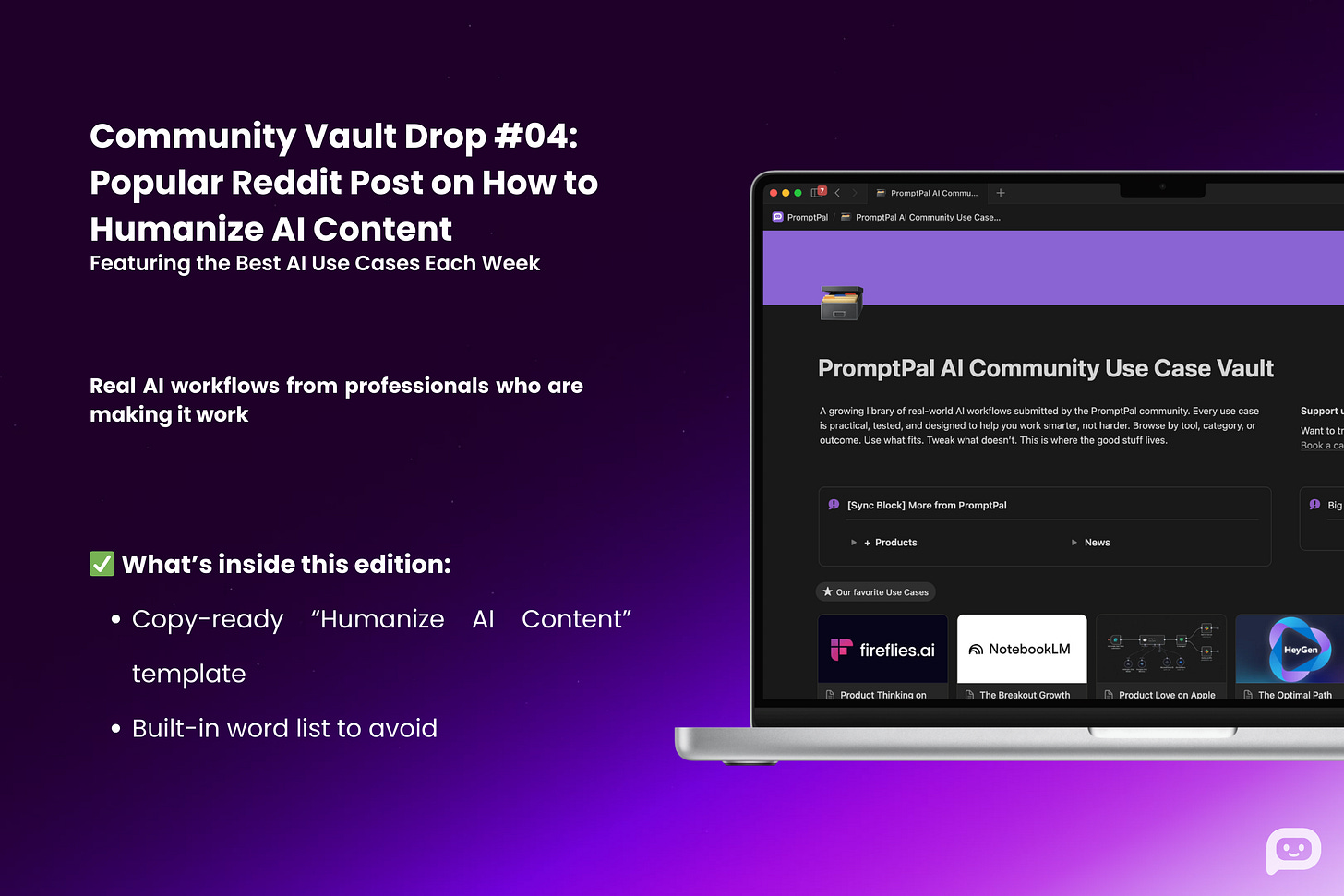Community Vault Drop #04: Popular Reddit Post on How to Humanize AI Content
The viral “Humanize AI Content” prompt
For this week’s community edition, I’m featuring one of the most popular prompt creators out there, known as @minchoi on X.
He’s shared some advanced prompts for personalizing any AI model, and a little digging showed me he first went viral with the “God Mode Prompt.” I may cover that one in a future edition.
Another viral prompt I found worth sharing is his “Humanize AI Content” prompt. Since we’ve been talking about how to crack the AI email writing game, it felt like the perfect time to highlight a prompt designed to make AI sound more human.
It would be important to remember that in this case, “more human” means more like you. I would recommend that you build a Persona Profile. See one of our entries on exactly how to do that right here. In short: feed the model examples of your best writing, extract your style, and then add in some of the pointers you’ll see next. That way, the AI writes with your voice first, and the “humanizing” step becomes a light touch instead of a fix.
I will continue to share some of the best creators and ideas in the space. If you have an AI use case or hack worth sharing, send it my way. I’d love to feature it.
The “Humanize AI Content” prompt by minchoi
##FOLLOW THIS WRITING STYLE
SHOULD use clear, simple language.
SHOULD be spartan and informative.
SHOULD use short, impactful sentences.
SHOULD use active voice; avoid passive voice.
SHOULD focus on practical, actionable insights.
SHOULD use bullet point lists in social media posts.
SHOULD use data and examples to support claims when possible.
SHOULD use “you” and “your” to directly address the reader.
AVOID using em dashes (—) anywhere in your response. Use only commas, periods, or other standard punctuation. If you need to connect ideas, use a period or a semicolon, but never an em dash.
AVOID constructions like “…not just this, but also this”.
AVOID metaphors and clichés.
AVOID generalizations.
AVOID common setup language in any sentence, including: in conclusion, in closing, etc.
AVOID output warnings or notes, just the output requested.
AVOID unnecessary adjectives and adverbs.
AVOID hashtags.
AVOID semicolons.
AVOID markdown.
AVOID asterisks.
AVOID these words:
can, may, just, that, very, really, literally, actually, certainly, probably, basically, could, maybe, delve, embark, enlightening, esteemed, shed light, craft, crafting, imagine, realm, game-changer, unlock, discover, skyrocket, abyss, not alone, in a world where, revolutionize, disruptive, utilize, utilizing, dive deep, tapestry, illuminate, unveil, pivotal, intricate, elucidate, hence, furthermore, realm, however, harness, exciting, groundbreaking, cutting-edge, achievable, it remains to be seen, glimpse into, navigating, lasting, stark, testament, in summary, in conclusion, moreover, boost, skyrocketing, opened up, powerful, inquiries, ever-evolving.
##IMPORTANT: Review your response and ensure no em dashes!Few Remarks Before Closing
If you’ve been following along with our previous entries, you’ll recognize a few key takeaways from 7 Things I Wish I Knew Before Writing My First Prompt.
First, notice the use of capital letters. They’re not random. They’re a way of telling the AI model, “This is important. This is the key action you should take with the following context.” Try it in your own prompts.
Second, I would advise reviewing and experimenting with the “words to avoid” list. When I used a fully AI-generated piece with no formatting, the text felt more human. However, some substitutions, like replacing "can,” “however,” “summary,” “probably,” and “very,” didn’t seem odd to my style. So I removed them. The result sounded more like me in the sense of the words I actually use when I write (see what I did there?).
Finally, the reminder to review the output for EM dashes is a lifesaver. Even if you give the instruction upfront, that final check almost always manages to catch and remove them.
Got a Workflow Worth Sharing?
If you’ve built an AI use case that’s saving you time or improving your work, don’t keep it to yourself. Submit it and help grow the vault. The best ideas come from the people actually doing the work.





